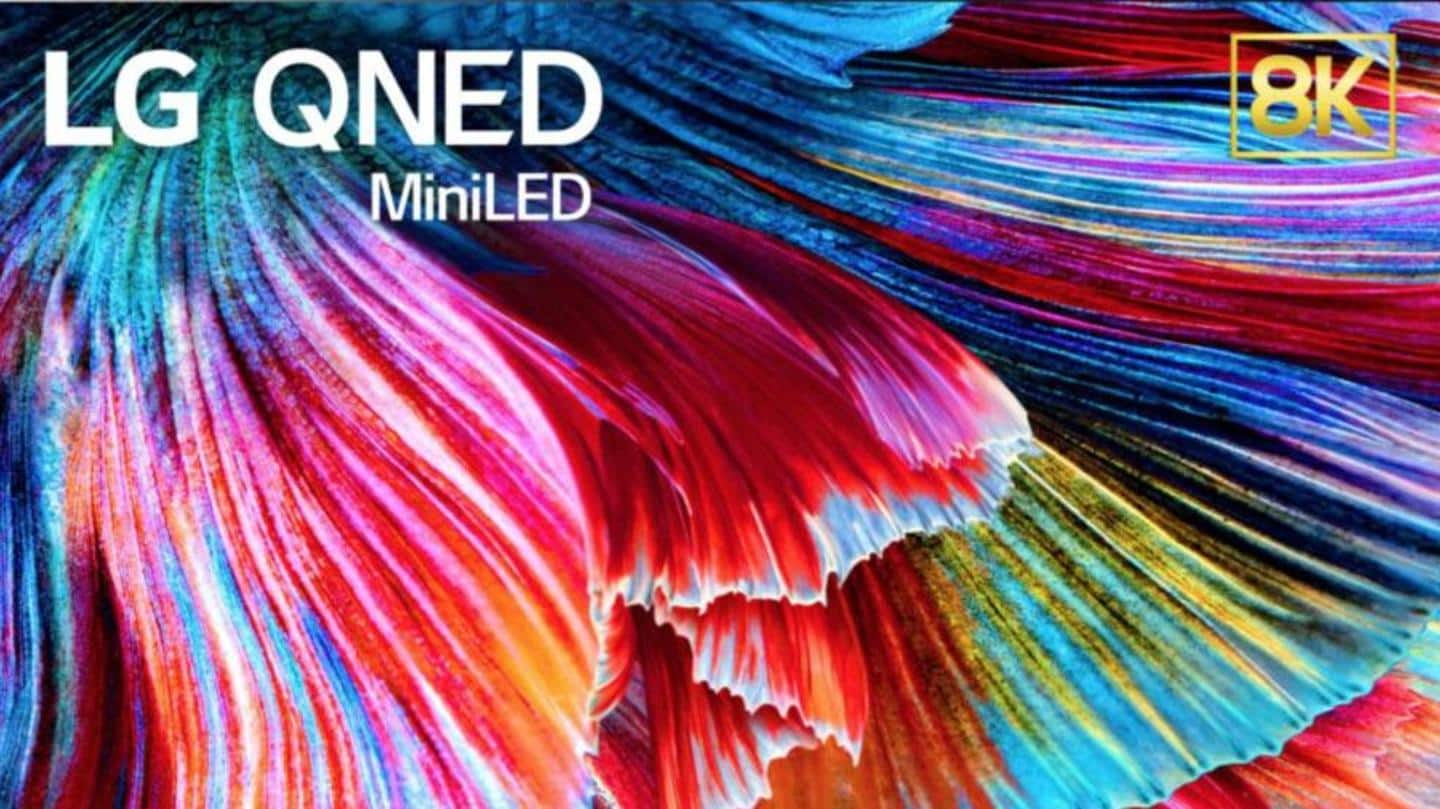
LG incorporates Mini LED technology in its 2021 TV line-up
What's the story
LG might be the king of OLED TVs, but LCDs are still the bread-and-butter for the television segment of the Korean electronics giant. The company has revealed details of its Mini LED-enhanced LCD television line-up for 2021.
It will be using the cutting edge backlighting technology for its premium range of 8K and 4K LCD TV models, in addition to its usual OLED repertoire.
Nanoparticle magic
LG QNED TVs blend quantum dot and NanoCell technologies
QNED TVs will be the first consumer-centric range of Mini LED TVs from LG. These displays will debut at the virtual CES 2021 event.
The TVs will be available in sizes and resolutions of up to 86 inches and 8K, respectively. The QNED displays combine quantum dot and NanoCell technologies.
The quantum dot layer enhances backlight purity, whereas NanoCell technology further removes color impurities.
Supercharging LCDs
Mini LED technology: Making LCDs slimmer and better looking
LG touts Mini LED displays as "a giant leap forward in LCD TV picture quality." The technology replaces larger light-emitting diodes in the conventional LED backlights with smaller and brighter Mini LEDs measuring in at up to 200 micrometers.
This not only makes LCD TVs slimmer but also enhances their contrast ratio when coupled with a whopping 2,500 local dimming zones.
Contrast ratio
What is full-array local dimming?
Unlike OLEDs, conventional LCD TVs cannot completely switch off individual pixels. This prevents them from achieving authentic blacks.
Full-array local dimming technology gets around this limitation by dividing parts of the backlight into zones that can be switched off individually.
This allows the LCD panels to achieve a wider contrast ratio, which is critical for HDR capability and enhancing black detail.
Worlds apart
Mini LED vs microLED
Measuring in at 200 microns, Mini LEDs are a fifth as small as traditional LEDs, which are 1,000 microns wide. MicroLEDs, however, are in a different league altogether at 5 microns, which is also the size of a red blood cell.
However, that's an unfair comparison because microLED panels are emissive by nature. Meaning, the pixels themselves produce light, which makes them inherently superior.